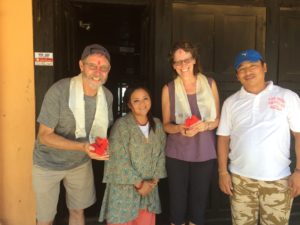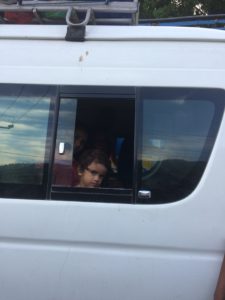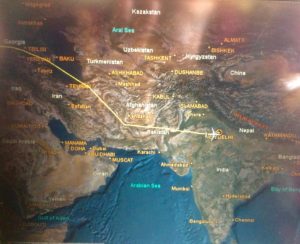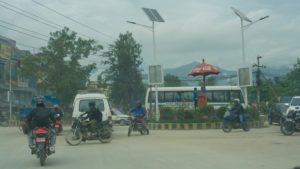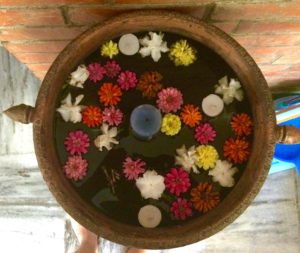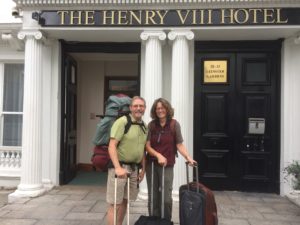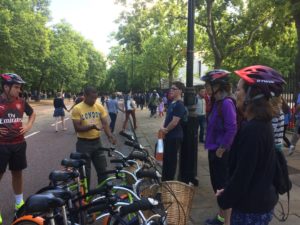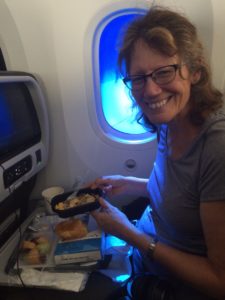September 4th – Today marked our first day at school. While we spent quite a bit of our time getting some orientation from Fionnuala Shenpen (TGL School Director), we were also introduced to all of the children and teachers. Tomorrow and Wednesday we will visit most of the classrooms and do observations so that we understand the process the teachers are using for instruction.

Among other topics, Fionnuala gave us an overview of the system of education here in Nepal. Though this is a Gompa (monastery) school, they are expected to follow the general guidelines of the Nepal system for levels, assessment, curriculum and the like. In this system, just as in the US, educational legislation and policy are out of sync with the realities faced by schools. Testing mandates appear to be pushed for symbolic reasons inconsiderate of the practical application. This sounds all too familiar to me, having dealt with Colorado’s mandates and all the repercussions it had for students, teachers and overall instruction. Every good teacher appreciates assessment, when it informs instruction. Teachers should be treated as professionals; empowered rather than inundated with institutional requirements. </end soap box>
The Routine
While it is too early to tell what our responsibilities and routines will look like here, the ongoing pace and activity of the students, teachers, monks, nuns and administrators is incredibly busy. There is the activity of the school, with 120+ students, providing 7+ levels of instruction, housing, and the 24 hour welfare of all the children. The Gompa, providing a Buddhist education (Tibetan Language and ritual instruction) for the nuns enrolled in school and some that are not. There is a regular flow of visitors (including Joni and I) from all over the world visiting the school and the Gompa who also require consideration. On top of this activity, there is the ongoing construction of the Main (new) Shrine hall rising up in the middle of the grounds. This means that workers and large trucks of sand, brick and water come and go. The noise of workers yelling, concrete mixers, lifts, horns, and tools bang about. Like the rest of Nepal, we have to become accustomed to multiple things happening at the same time – polyphony (not exactly Bach).
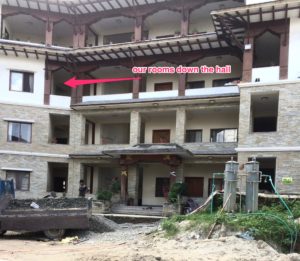

 Fortunately there is an ebb and flow to the activity with some very peaceful and sweet moments. For instance, there is sound of early prayers. At 4:30am Nuns gather in the old Shrine hall to recite prayers and perform traditional rituals. Amid random sounds of distant (and sometimes close) barking dogs, the nuns quietly gather in the hall at 4:15. At 4:25 the sound of the gong calls all to come and soon the room is filled with their beautiful voices. While the dogs and the hum of the city are ever present, their voices settle it.
Fortunately there is an ebb and flow to the activity with some very peaceful and sweet moments. For instance, there is sound of early prayers. At 4:30am Nuns gather in the old Shrine hall to recite prayers and perform traditional rituals. Amid random sounds of distant (and sometimes close) barking dogs, the nuns quietly gather in the hall at 4:15. At 4:25 the sound of the gong calls all to come and soon the room is filled with their beautiful voices. While the dogs and the hum of the city are ever present, their voices settle it.
September 9th
I have been here at TGL for only one week now and have just begun to adjust. Despite all the inconvenience, periodic discomfort, and shortage of english speaking companions, I feel at home here. Though she just returned from the US and is recovering from jet lag, Fionnuala has gone out of her way to help Joni and I get our basic necessities together and get the layout of the town of Chobhar. While we don’t speak Tibetan or Nepali, the Anis smiles are a treat. Slowly but surely their shyness is melting and they try to speak English.
Today is our first day off after a week of orientation, observation, familiarization and scheduling. Next week we will begin our regular schedules in the classroom. The schedule appears pretty demanding to me now. We’ll see.


